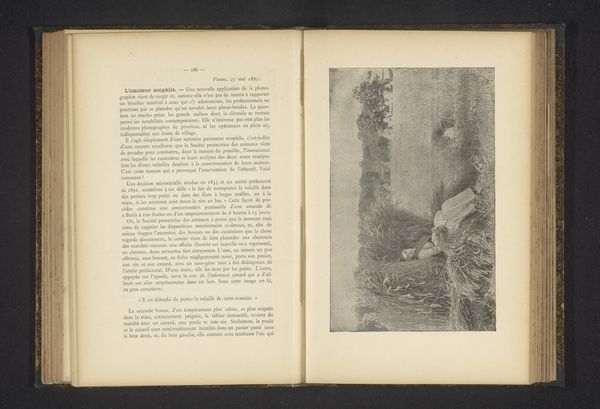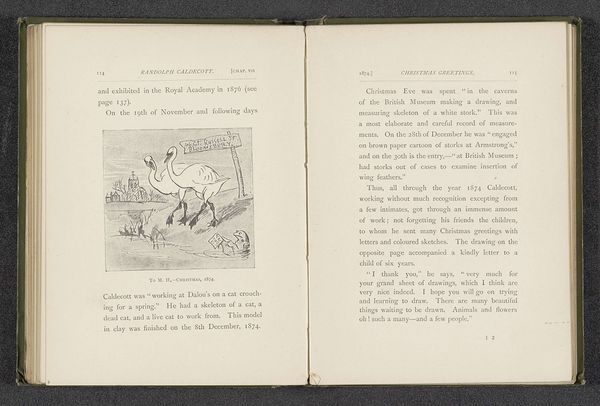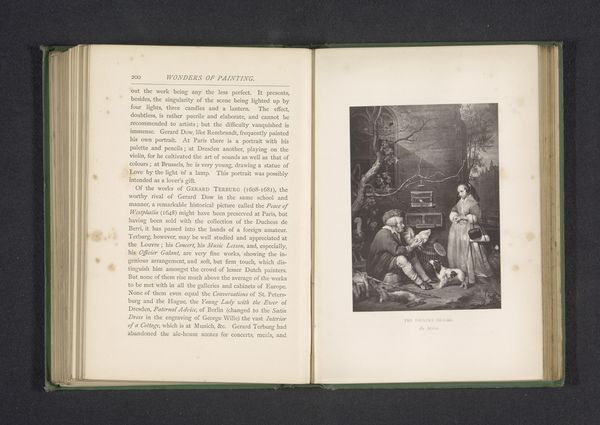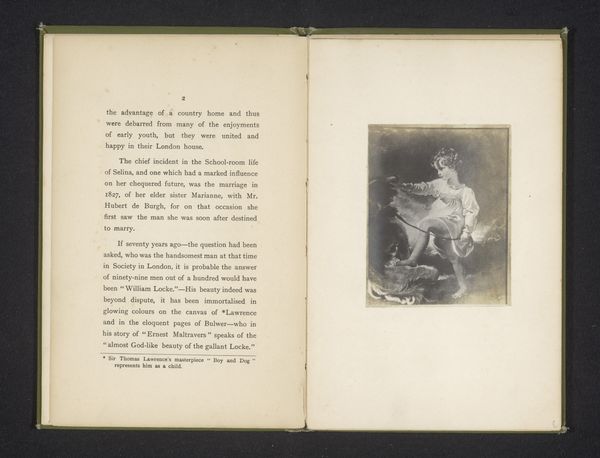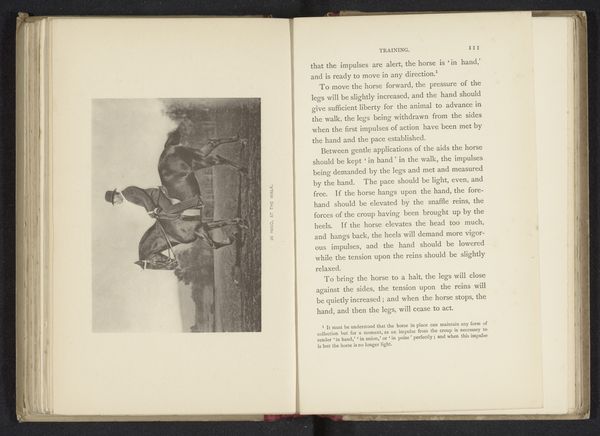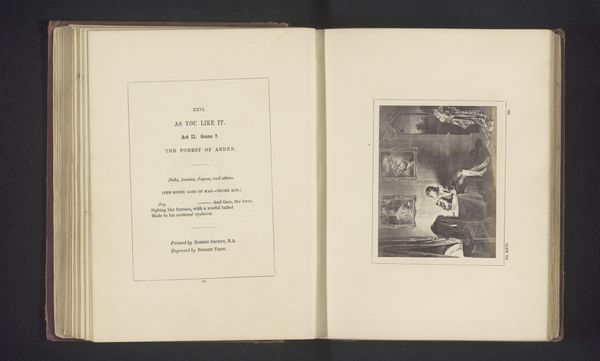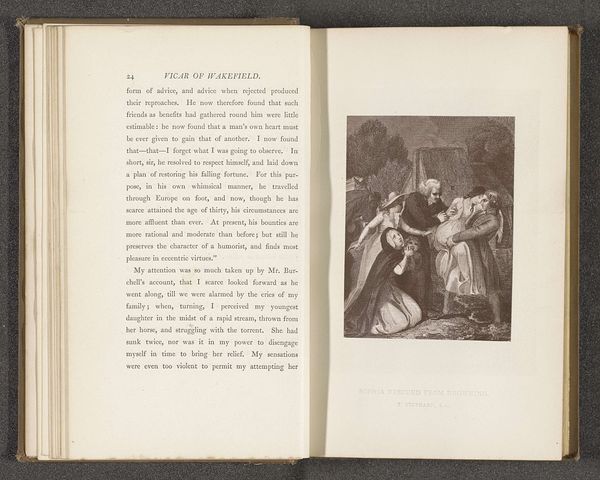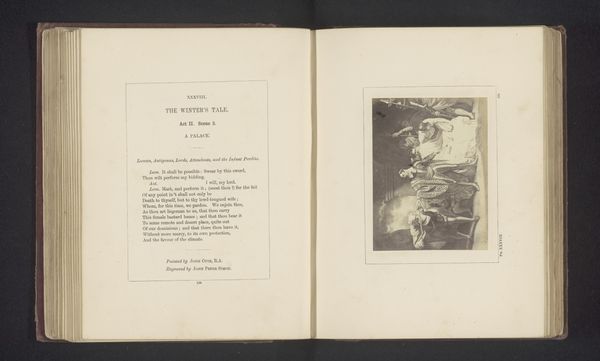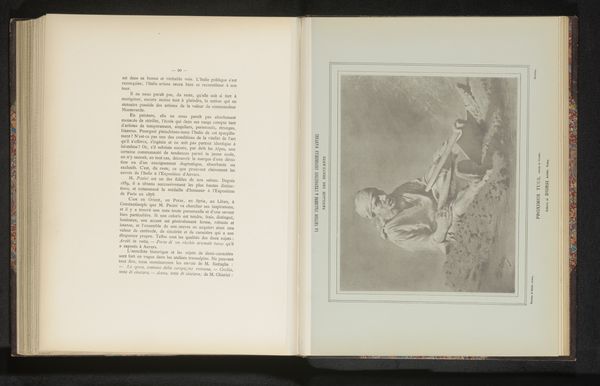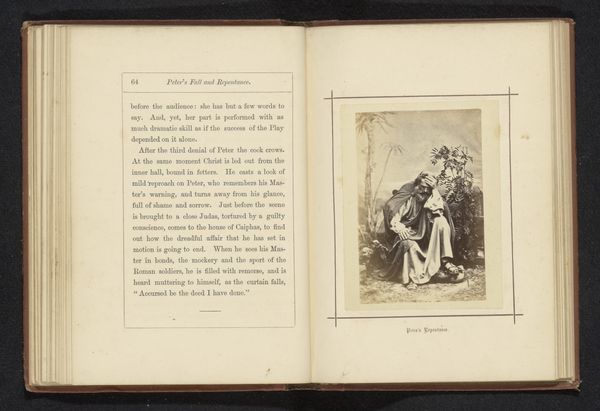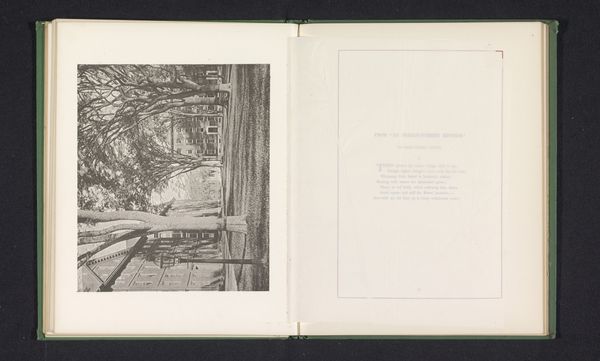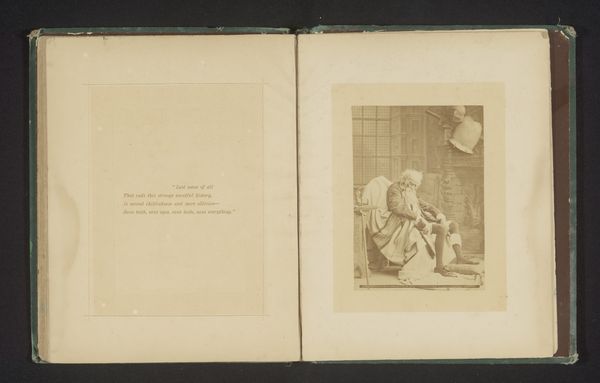
Dimensions: height 150 mm, width 102 mm
Copyright: Rijks Museum: Open Domain
Curator: Here we have a reproduction of an earlier artwork titled "Fotoreproductie van schilderij met twee zwanen door Randolph Caldecott," made before 1887. It’s a drawing on paper, evoking elements of romanticism and presented in a landscape format. Editor: The swans are intensely intimate. Each preening its feathers in an insular, quiet space. A stillness settles, despite the implied activity. Curator: The material reality interests me—a reproduction suggesting an earlier painting turned decorative panel, found in a book and presented within Mr. Renshawe's dining room. Its purpose served an elevated class. These images, circulated to reinforce specific notions around nature. Editor: Absolutely, swans become synecdoche here. Representative not only of their animal selves, but for idealized nature within the cultured domestic space. Note the presence of rigid geometrical lines behind the swans themselves, reinforcing notions of man made, idealized paradise. What’s their connection to romanticism, though? Curator: This drawing and earlier oil versions, lean into Romantic ideals, capturing the untamed aspects of nature yet controlled by aesthetic convention. Reflecting idealized beauty, harmony and balance achieved via labor and medium of image production. Even on paper it carries this original tension of an "animal kind," that contrasts against decorative utility. Editor: But maybe Romanticism extends deeper? There’s something profoundly meditative about these swans, lost in their own worlds and perhaps mirroring a human desire for quietude within an increasingly industrial age. Did Caldecott, the author and illustrator, reflect that loss of human nature while representing idealized landscapes? Curator: Yes! As mass production increased and new consumption practices evolved, these nostalgic portrayals provided visual reprieves and helped to codify what that perfect natural space ought look and feel like. What else? Editor: Well I’m leaving here pondering if the original painting carries any further emotional affect if located, or remains purely utilitarian despite itself. This version invites an emotional introspection through romantic gestures in composition alone. Curator: A potent thought as we observe artistic evolution embedded within reproductive economies; seeing it not as diminishment but rather expanded material presence shaping perspectives throughout time.
Comments
No comments
Be the first to comment and join the conversation on the ultimate creative platform.
